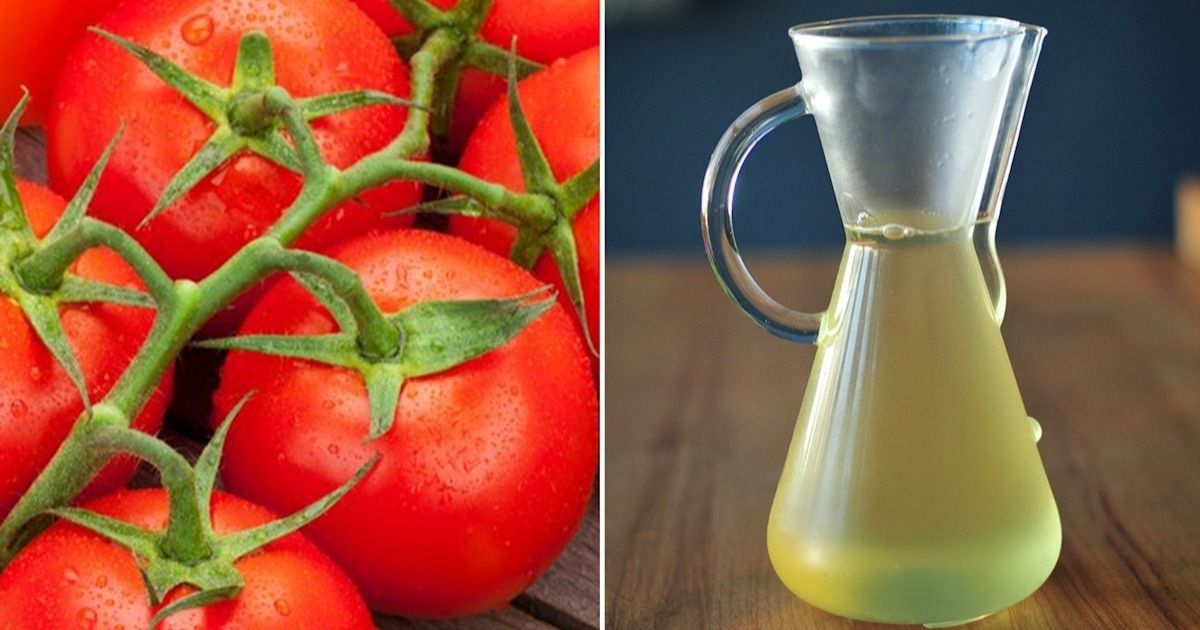How often do you water tomato plants?
Tomato plants require consistent watering throughout their growing season to thrive and produce a bountiful harvest. However, the frequency of watering can vary depending on several factors, such as the type of tomato plant, the growing method, the weather conditions, and the stage of growth. Proper watering is crucial for healthy plant growth, fruit development, and disease prevention.
How often do you water tomato plants in garden beds?
Tomato plants grown in garden beds or raised beds have different watering needs compared to those grown in containers. The soil type, temperature, and humidity levels play a significant role in determining the watering frequency. As a general guideline, it’s recommended to water tomato plants in garden beds every 3 to 7 days, depending on the weather conditions.
During hot and dry periods, when the soil dries out more quickly, you may need to water your tomato plants more frequently, perhaps every 2 to 4 days. In cooler and more humid conditions, you can extend the time between waterings to allow the soil to partially dry out before the next watering.
It’s essential to monitor the soil moisture levels regularly by sticking your finger into the soil or using a moisture meter. The soil should be moist but not waterlogged. Overwatering can lead to root rot while underwatering can stunt plant growth and reduce fruit production.
How often do you water tomato plants in containers?
Container-grown tomatoes typically require more frequent watering than those planted in the ground. This is because the limited soil volume in containers dries out faster, especially in warm weather. As a general rule, it’s recommended to water container-grown tomatoes every 1 to 3 days, or even daily during periods of extreme heat.
Check the soil moisture level regularly by sticking your finger into the potting mix or using a moisture meter. The potting mix should be consistently moist but not saturated. Overwatering can lead to root rot and other issues, while underwatering can cause the plant to wilt and stress, affecting fruit production.
Retaining moisture in container-grown tomatoes
To help retain moisture in container-grown tomatoes and reduce the need for frequent watering, consider the following tips:
- Use a high-quality potting mix designed for vegetables, which often contains moisture-retaining ingredients like peat moss or coconut coir.
- Apply a 2-4-inch layer of mulch around the base of the plant to reduce evaporation and keep the soil cool.
- Choose larger containers, as they hold more soil and dry out less quickly than smaller pots.
- Consider self-watering containers or installing a drip irrigation system for consistent moisture delivery.
- Incorporate water-retaining crystals or granules into the potting mix, which can help maintain moisture levels for longer periods.
How often do you water tomato plants in straw bales?

Growing tomatoes in straw bales is a unique method that requires careful monitoring of moisture levels. Straw bales tend to dry out quickly, especially in hot weather. It’s recommended to water straw bale-grown tomatoes every 1 to 3 days, or even daily during periods of extreme heat.
When watering straw-bale-grown tomatoes, it’s crucial to ensure that the straw bale is thoroughly saturated with water during each watering session. The straw bale should be soaked until water begins to drain from the bottom, allowing the moisture to penetrate the entire bale.
It’s also important to monitor the moisture levels within the straw bale by periodically checking the interior dampness. If the interior of the bale dries out, it can be challenging to rehydrate, leading to plant stress and reduced fruit production.
How to water tomato plants
There are several effective methods for watering tomato plants, each with its advantages and considerations. The method you choose may depend on the size of your garden, the number of plants, and your personal preferences.
Also read this post:plantar warts are highly contagious
1) Watering with a sprinkler
Using a sprinkler is a convenient way to water a large tomato garden or multiple rows of plants. Sprinklers can cover a wide area efficiently, ensuring even water distribution. However, it’s important to water early in the morning to minimize evaporation and reduce the risk of leaf diseases caused by prolonged moisture on the foliage.
When using a sprinkler, adjust the spray pattern and water pressure to ensure adequate coverage without causing soil erosion or excessive runoff. It’s also recommended to water deeply, allowing the moisture to penetrate several inches into the soil, and encouraging deeper root growth.
2) Watering tomatoes with a watering can
Watering with a watering can is a suitable option for small gardens or a few container-grown tomato plants. This method allows you to direct the water precisely to the base of the plant, reducing water waste and minimizing moisture on the leaves.
When watering with a watering can, it’s essential to water slowly and deeply, allowing the water to penetrate the soil without causing excessive runoff or puddling. This method can be time-consuming for larger gardens, but it provides excellent control over the water application.
3) Watering with a hose and watering wand
Using a hose and watering wand is an efficient method for watering tomato plants in garden beds or containers. The wand allows you to direct the water flow precisely, and you can easily adjust the water pressure to prevent soil erosion or splashing water onto the foliage.
When using a hose and watering wand, it’s essential to water at the base of the plant, avoiding wetting the foliage as much as possible. Wet leaves can increase the risk of fungal diseases and other problems. Water deeply, ensuring that the moisture penetrates several inches into the soil.
4) Irrigating tomato plants with a soaker hose
Soaker hoses are an excellent option for watering tomato plants, as they deliver water directly to the soil, minimizing water loss through evaporation and preventing moisture on the foliage. This method is particularly useful for garden beds or raised beds, as the soaker hose can be laid along the row of plants.
To use a soaker hose effectively, position it along the base of the plants and secure it in place with landscape staples or rocks. Turn on the water supply and allow the hose to slowly release water into the soil, ensuring that the moisture penetrates several inches deep.
5) Using drip irrigation to water tomatoes
Drip irrigation systems are highly efficient for watering tomato plants, as they deliver water directly to the root zone, reducing water waste and minimizing moisture on the foliage. This method is well-suited for both garden beds and container-grown tomatoes, and it can be automated with a timer for consistent watering.
To set up a drip irrigation system for tomato plants, install the main line and connect it to a water source. Then, lay out the drip lines or drip emitters along the base of the plants, ensuring that the water is delivered directly to the root zone. Adjust the flow rate and duration based on the soil type, plant size, and weather conditions.
How to reduce the need to water tomato plants

While tomato plants require consistent moisture, several techniques can help reduce the need for frequent watering and promote water conservation:
- Mulch around the base of the plants with 2-4 inches of organic material, such as straw, bark chips, or shredded leaves. Mulch helps retain soil moisture and suppress weed growth, reducing water loss through evaporation and competition for water.
- Grow indeterminate tomato varieties or heirloom tomato varieties, which often have deeper root systems and are better adapted to dry conditions than determinate or hybrid tomato varieties. Indeterminate tomatoes continue to grow and produce fruit throughout the season, while determinate varieties have a more compact growth habit and produce a single flush of fruit.
- Consider using drought-tolerant tomato varieties, which are bred specifically for water conservation. These varieties often have deeper root systems, smaller leaf surfaces, and other adaptations that help them thrive in drier conditions.
- Incorporate organic matter into the soil before planting, as it helps improve water retention and soil structure. Compost, aged manure, or other organic amendments can increase the soil’s ability to hold moisture, reducing the need for frequent watering.
- Use drip irrigation or soaker hoses to deliver water directly to the root zone, minimizing water loss through evaporation and ensuring efficient water use.
- Consider using shade cloth or row covers during periods of intense heat and sunlight, as this can help reduce evaporation and maintain soil moisture levels.
When should you water tomato plants?
The best time to water tomato plants is in the morning or early afternoon. Watering in the morning allows the plants to absorb and utilize the moisture more efficiently before the heat of the day. Additionally, wet foliage in the evening can increase the risk of fungal diseases and other problems.
However, if you live in an area with hot and dry conditions, it’s advisable to water your tomato plants in the early morning or late afternoon when the temperatures are cooler. This helps minimize water loss through evaporation and ensures that the plants receive the hydration they need during the hottest parts of the day.
Reduce watering when the plants begin to fruit
As tomato plants mature and begin to set fruit, it’s important to gradually reduce the frequency of watering. Too much water during the fruiting stage can lead to splitting or cracking of the tomatoes, as well as potential issues with flavor and shelf life.
Monitor the plants closely and adjust watering accordingly, allowing the soil to partially dry out between waterings. This practice encourages the tomato plants to focus their energy on fruit production rather than excessive foliage growth.
It’s important to strike a balance between providing enough moisture for the fruit to develop properly and avoiding overwatering, which can lead to problems like blossom end rot or cracking.
Factors affecting watering needs
Several factors can influence the watering needs of tomato plants, including:
- Temperature and humidity: Hot and dry conditions increase water loss through evaporation and transpiration, requiring more frequent watering. Cooler, humid conditions reduce water needs.
- Soil type: Well-draining soils, such as sandy or loamy soils, dry out more quickly, while clay soils retain moisture for longer periods.
- Plant size and growth stage: Larger plants with more foliage and fruit require more water than smaller, younger plants.
- Wind exposure: Windy conditions can increase water loss through evaporation, necessitating more frequent watering.
- Sunlight exposure: Plants growing in full sun will require more water than those in partial shade.
- Mulch: A layer of organic mulch helps retain soil moisture, reducing water needs.
It’s essential to monitor your tomato plants closely and adjust watering practices accordingly, taking into account these various factors.
Signs of overwatering and underwatering

Recognizing the signs of overwatering and underwatering can help you maintain the proper moisture levels for your tomato plants. Here are some common indicators:
Overwatering signs:
- Wilting or drooping leaves (counterintuitive, but a sign of root damage due to lack of oxygen)
- Yellow or wilted lower leaves
- Stunted growth
- Blossom end rot (a calcium deficiency caused by uneven water uptake)
- Fungal diseases like early blight or Septoria leaf spot
Underwatering signs:
- Wilting or drooping leaves during the day (leaves may recover at night)
- Curled or cupped leaves
- Slow growth
- Blossom drop (flowers falling off before setting fruit)
- Cracked or misshapen fruit
If you notice any of these signs, adjust your watering practices accordingly. Overwatered plants may need to be temporarily withheld from water until the soil dries out, while underwatered plants require immediate deep watering.
Monitoring soil moisture
To ensure proper watering, it’s crucial to monitor the soil moisture levels regularly. Several methods can help you determine when to water your tomato plants:
- Soil moisture meter: These inexpensive devices measure the moisture content in the soil, providing accurate readings and taking the guesswork out of watering.
- The finger test: Simply stick your finger into the soil up to the second knuckle. If the soil feels dry, it’s time to water. If it feels moist or damp, hold off on watering.
- Visual inspection: Look for signs of dry soil, such as cracking or a lighter color. Also, observe the plant’s appearance for signs of wilting or stress.
- Weighing containers: For container-grown tomatoes, lift the pot periodically. A lightweight container indicates the need for watering.
By monitoring soil moisture levels regularly, you can avoid both overwatering and underwatering, ensuring that your tomato plants receive the optimal amount of water for healthy growth and fruit production.
Adjusting watering practices during different growth stages
Tomato plants have different water requirements depending on their growth stage. Here’s how you can adjust your watering practices accordingly:
- Seedling and transplant stage: After sowing seeds or transplanting seedlings, water regularly to keep the soil consistently moist, but not waterlogged. This is a crucial stage for establishing a strong root system.
- Vegetative growth stage: As the plants grow taller and develop more foliage, increase the amount and frequency of watering. Consistent moisture is essential during this stage for leaf and stem development.
- Flowering and fruit set: During flowering and fruit set, maintain consistent soil moisture levels to ensure proper pollination and fruit development. Avoid overwatering, as it can lead to blossom end rot or cracking.
- Fruit development and ripening: As the tomatoes ripen, gradually reduce the frequency of watering, allowing the soil to partially dry out between waterings. This practice can improve flavor and prevent splitting or cracking of the fruit.
By adjusting your watering practices based on the plant’s growth stage, you can provide the optimal moisture levels for each phase of development, ultimately leading to a bountiful and flavorful tomato harvest.
Addressing common watering issues
Despite your best efforts, you may encounter some common watering issues when growing tomato plants. Here are some tips for addressing these problems:
- Blossom end rot: This condition, characterized by a dark, leathery spot on the bottom of the fruit, is often caused by uneven water uptake or a calcium deficiency. To prevent it, maintain consistent soil moisture and consider adding calcium supplements or limestone to the soil.
- Cracking or splitting fruit: Fluctuations in soil moisture can cause tomatoes to crack or split, especially as they ripen. Maintain a consistent watering schedule and avoid overwatering during the ripening stage.
- Leaf diseases: Wet foliage can promote the growth of fungal diseases like early blight or Septoria leaf spot. Water at the base of the plants and avoid wetting the leaves, especially in the evening.
- Root rot: Overwatering can lead to root rot, a fungal disease that causes the roots to decay and the plant to wilt. Improve soil drainage and adjust your watering practices to prevent this issue.
- Salt buildup: In areas with high mineral content in the water or when using fertilizers, salt can accumulate in the soil and cause damage to the roots. Periodically flush the soil with extra water to leach out excess salts.
By addressing these common watering issues promptly, you can ensure the health and productivity of your tomato plants throughout the growing season.
For more information on growing tomatoes, please check out these articles:
- Indeterminate vs. Determinate Tomatoes: Understanding the Differences
- Heirloom Tomatoes: Embracing Flavor and Diversity in Your Garden
- Hybrid Tomatoes: Combining the Best of Both Worlds
- The Ultimate Guide to Growing Tomatoes in Containers
- Straw Bale Gardening: A Unique Method for Growing Tomatoes
- Tomato Troubleshooting: Common Problems and Solutions
- Pruning and Trellising Tomato Plants for Maximum Yields
By following these guidelines and adjusting your watering practices based on the specific needs of your tomato plants, you can ensure a bountiful and flavorful harvest throughout the growing season. Remember, consistent moisture is key, but overwatering can be just as detrimental as underwatering. With a little practice and attentiveness, you’ll find the perfect watering balance for your tomato plants.
FAQs:
Do tomatoes need to be watered every day?
No, tomatoes typically don’t need daily watering – most tomato plants require watering every 3-7 days for in-ground plants and 1-3 days for container-grown plants. Watering frequency depends on factors like temperature, humidity, soil type, and plant size.
Can you overwater a tomato plant?
Yes, it is possible to overwater tomato plants, which can lead to issues like root rot, fungal diseases, blossom end rot, and cracking/splitting of fruits. Signs of overwatering include wilting leaves, yellow lower leaves, and stunted growth.
When should you stop watering tomatoes?
You should reduce watering once tomatoes begin to ripen and turn red/colors, as too much moisture at that stage can cause cracking, splitting, and impact flavor. Let the soil partially dry between waterings when fruits are maturing.
What is the best watering system for tomatoes?
Drip irrigation and soaker hoses are considered the best watering systems for tomatoes as they deliver water directly to the roots while minimizing moisture on leaves and reducing evaporation. They allow for consistent, deep watering.











